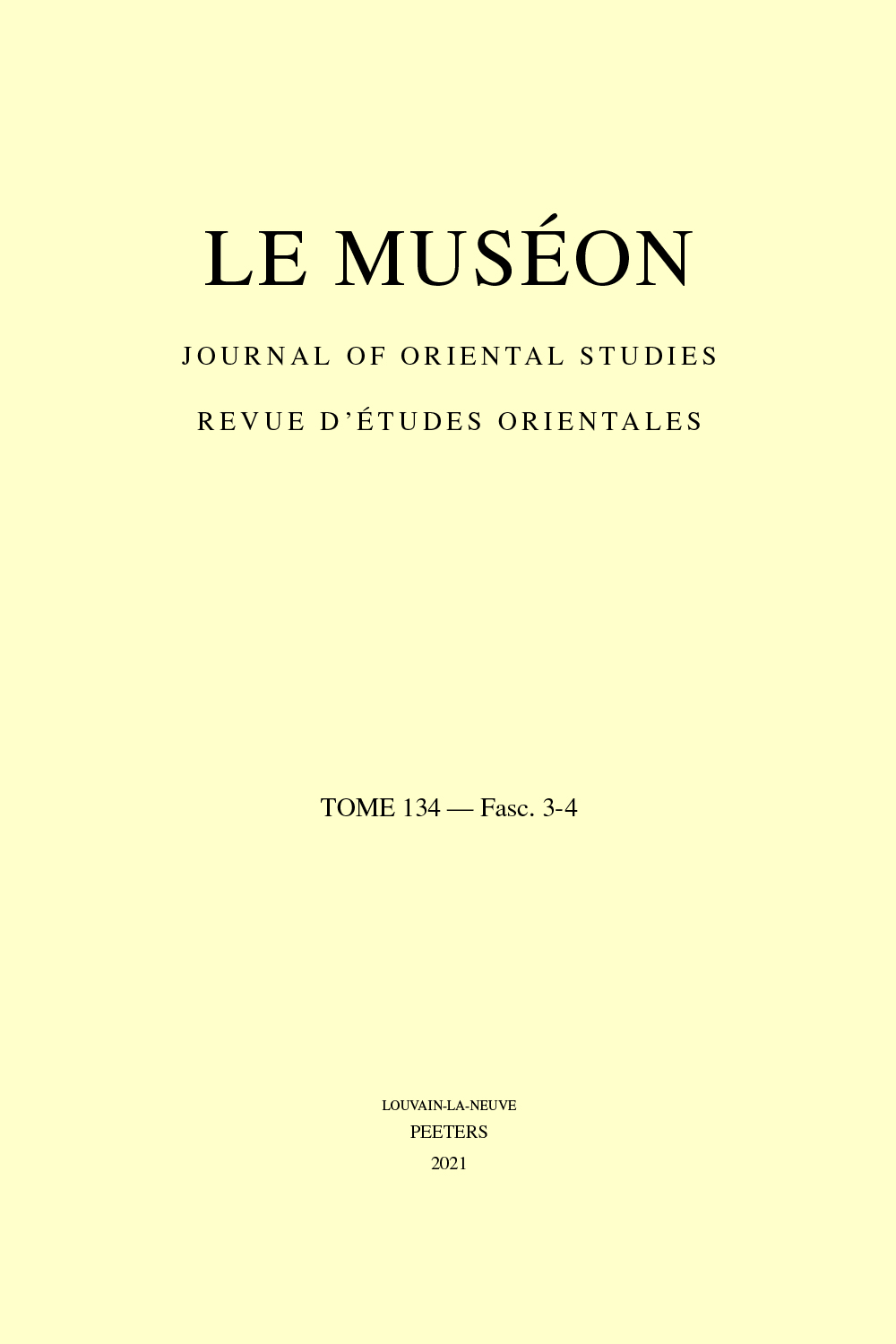 previous article in this issue previous article in this issue | next article in this issue  |

Preview first page |
Document Details : Title: Corona regni Armeniae Subtitle: Aus der Spätzeit der staufisch-armenischen Beziehungen Author(s): HALFTER, P. Journal: Le Muséon Volume: 120 Issue: 1-2 Date: 2007 Pages: 131-161 DOI: 10.2143/MUS.120.1.2020270 Abstract : In the year 2005 a hitherto unexplored manuscript of the late 13th century was found at the library in the university of Innsbruck, containing numerous unknown documents of emperor Frederick II and his son Conrad IV. One of these documents is the letter of king Conrad IV to the master and the chapter of the Teutonic Knights advertising the friars that he (king Conrad) will return to king Hethum I the royal crown of Cilician Armenia (corona regni), which Conrad’s father, emperor Frederick II, had given in trust to the Teutonic Knights. The mentioned crown must have been the same by which the first king of Cilician Armenia Levon I was crowned as vassal king under the suzerainty of the Western Empire. During the struggles of succession after the death of Levon I, the crown had been carried off to Antioch on Orontes, whose prince Bohemund IV wanted to exercise influence on the internal affairs of Cilicia. During the crusade of Frederick II, when the emperor met with the prince of Antioch twice, Frederick as Feudal overlord of Cilicia and Antioch must have forced Bohemund to surrender him the royal crown, which he deposited inh ouse of the Teutonic Knights in St. Jean d'Acre or in the castle of Montfort, which was the main fortress of the order. Perhaps by this action the emperor wanted to secure the loyalty of King Hethum, for imperial power in Cilicia had vanished during the struggles of succession, and pretenders to the royal throne sought rather the support of Pope Honorius III than that of the emperor. The crown in the custody of an institution, which was a trustworthy partisan of the emperor, would give Frederick the chance to restore the authority of the Western Empire in Cilicia. On the other side king Hethum I needed his predecessor’s crown, for his legitimacy was not beyond doubt. His rule was based on the power of his father, the bailli Constantin of Paperon, on the consent of the barons and the church and on his marriage with Zabel, daughter of Levon I and designed heiress of the throne. But the last aspect made him king only as husband of the queen. Furthermore Zabel had been urged to marry Hethum and she showed her resistance against the forced marriage: She is said to have refused to consummate the marriage for several years. Under these difficult circumstances, the crown of Levon I on Hethum’ s head would have shown his subjects that it was he who pretended to be the true successor of the first Cilician king. Notwithstanding his expressed loyalty towards the imperial dynasty he had to be patient. It was only under the rule of Conrad IV (1252-1254) that Hethum’s wish to recover Levon’s crown could be fulfilled. |
|


